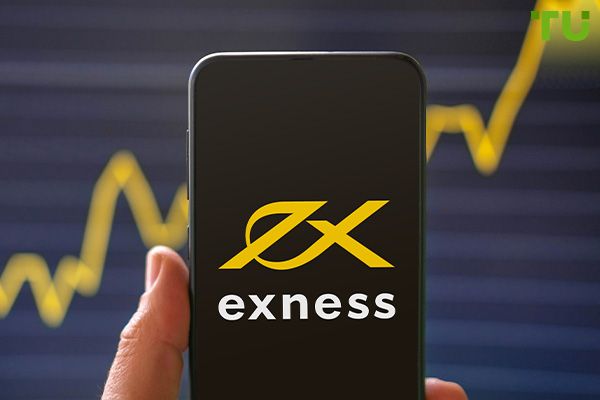Understanding Exness Trading Volume: A Deep Dive
The trading volume is an essential metric that helps traders and investors gauge market activity and liquidity. On platforms like Exness, which are known for their user-friendly interfaces and diverse asset offerings, understanding trading volume can significantly impact trading strategies. In this article, we will explore what trading volume is, how it works specifically on the exness trading volume Exness FX broker, and why it is crucial for traders to consider this metric in their trading decisions.
What is Trading Volume?
Trading volume refers to the number of shares, contracts, or lots traded within a specific period, usually a day. It is a crucial indicator of market activity and can reflect the strength of a price movement. A high trading volume typically indicates strong interest in a security, while low volume can signify weak interest or consolidation.
Why is Trading Volume Important?
Understanding trading volume is crucial for several reasons:
- Liquidity: Higher trading volumes often correlate with greater liquidity, meaning traders can buy and sell assets more easily without affecting the price. This is particularly important for day traders or those executing larger trades.
- Market Trends: An understanding of volume can help confirm price trends. For instance, if an asset’s price is rising and volume is increasing, it can signal bullish momentum, whereas a price increase with decreasing volume might indicate a potential reversal.
- Volatility: Sudden increases in trading volume can point to potential volatility. Traders often look for volume spikes as they can indicate a breakout or a breakdown in a particular asset.
Exness Trading Volume: Key Features
Exness, as a well-established forex and CFD broker, offers a variety of trading options across different asset classes. Understanding how trading volume works on the Exness platform can provide valuable insights for traders. Here are some key aspects:
1. Instruments and Market Diversity
Exness provides access to numerous financial instruments, including forex, stocks, commodities, and cryptocurrencies. Each of these categories can exhibit different trading volumes based on market dynamics. For example, major currency pairs like EUR/USD often showcase high trading volumes, while less popular pairs may experience lower activity.
2. Real-Time Volume Data
Exness offers real-time volume data, allowing traders to monitor market activity as it happens. This feature is essential for creating effective trading strategies based on current market conditions.
3. Volume Indicators
Many traders use technical indicators that incorporate volume data to enhance their analysis. For example, the Volume Moving Average or the On-Balance Volume (OBV) can help traders identify trends and potential reversals based on volume changes.
How to Analyze Trading Volume on Exness
Analyzing trading volume effectively requires a combination of tools and techniques. Here are some strategies traders can employ within the Exness platform:

1. Volume Charts
Many trading platforms, including Exness, provide volume charts alongside price charts. Traders can utilize these charts to visualize the relationship between price movements and trading volumes. Volume bars (often appearing at the bottom of a price chart) give instant visibility into how much trading activity is occurring at different price levels.
2. Correlation with Price Movements
Traders should observe how volume correlates with price movements. Increasing volume accompanying price increases can confirm bullish trends, while rising volume during price declines can suggest bearish momentum. Conversely, declining volume during price movements may indicate a lack of conviction or participation in the market.
3. Volume Breakouts
One of the most effective strategies is to look for volume breakouts. A price move accompanied by a significant increase in volume can signal the start of a new trend. Conversely, a price move on low volume may indicate a false breakout and should be approached with caution.
Challenges in Trading Volume Analysis
While trading volume can provide vital insights, traders should also be aware of its limitations:
- Market Conditions: During certain events, like economic releases or geopolitical developments, trading volumes can spike due to increased market participation, potentially leading to erratic price movements.
- Manipulative Practices: In some cases, larger traders may use volume manipulation tactics to create false signals, making it essential to consider volume context alongside other indicators.
Best Practices for Utilizing Trading Volume
To maximize the benefits of trading volume analysis, traders should follow these best practices:
- Diversification: Don’t rely on trading volume as the sole indicator for decision-making. Combine volume analysis with other technical and fundamental tools to enhance your trading strategy.
- Stay Informed: Keep up to date with financial news and economic indicators, as these can significantly impact trading volumes across different asset classes.
- Use Stop-Loss Orders: When trading in volatile conditions or during significant volume spikes, utilize stop-loss orders to minimize potential losses.
Conclusion
Exness trading volume is a key element that can enhance your trading success. By understanding its importance, analyzing volume trends, and employing effective strategies, traders can leverage this critical metric to make informed decisions. While it is an invaluable tool, remember to complement volume analysis with other trading strategies for a well-rounded approach in navigating the markets.